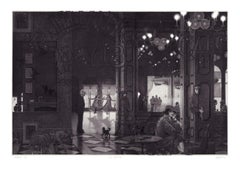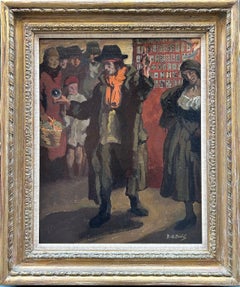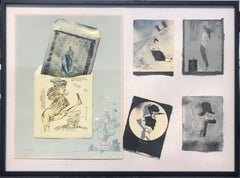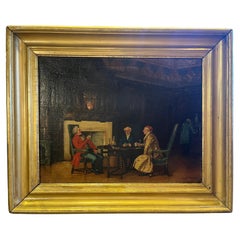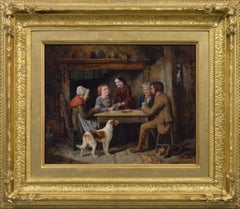Items Similar to The Gamesters. The Fortune Teller.
Want more images or videos?
Request additional images or videos from the seller
1 of 17
Rev. Matthew William Peters, R. A.The Gamesters. The Fortune Teller.1786
1786
$5,900
£4,607.15
€5,229.85
CA$8,487.26
A$9,239.27
CHF 4,870.43
MX$111,875.56
NOK 61,403.37
SEK 57,505.25
DKK 39,039.13
About the Item
THE GAMESTERS and THE FORTUNE TELLER.
A wonderful pair of color printed mezzotint engravings after paintings by the Rev. Matthew William Peters, R.A. Matthew William Peters (1742 – 20 March 1814) was an English portrait and genre painter who later became an Anglican clergyman and chaplain to George IV. He became known as "William" when he started signing his works as "W. Peters". – Tate
THE GAMESTERS. The subtitle continues, “Vice whatever sex or form it may assume leadeth to destruction, - woe to the unwary youth who hath been seduced into its acquaintance.” – Peters. “To the young Nobility of England this Plate is most humbly Inscribed by their devoted and obedt. Servant”.” - J. R Smith. Supposedly the two gentlemen sitting and playing cards have been identified as Lord Courtenay (left) and Thomas Rowlandson, the great caricaturist (right). This mezzotint engraving was printed in color and finished by hand. It was engraved by W. Ward and published in London, May 22, 1786, by J. R. Smith, N83 Oxford Street.
THE FORTUNE TELLER. The subtitle continues, “To his Grace Charles Duke of Rutland etc. etc. etc. a Lover and Patron of the Arts this Plate is most humbly Inscribed by his most devoted obedt. Servt. – J. R. Smith. This mezzotint engraving was printed in color and finished by hand. It was engraved by J. R. Smith, “Mezzotint engraver to His Royal Highness the Prince of Wales.” This piece was published in London, May 22, 1786, by J. R. Smith N83 Oxford Street.
The prints are deluxe printings, being printed in color and finished by hand - they are normally seen uncolored, printed in black ink. The image size of each print is 14.88 x 17.13 inches (37.7 x 43.5 cm). The average paper size is 17.5 x 18.5 inches.
Both pieces are in overall good condition. "Fortune Teller" has a tear in the upper margin 0.75 of an inch into the image - professionally repaired.
- Creator:Rev. Matthew William Peters, R. A. (1742 - 1814)
- Creation Year:1786
- Dimensions:Height: 23 in (58.42 cm)Width: 23.5 in (59.69 cm)Depth: 0.13 in (3.31 mm)
- Medium:
- Movement & Style:
- Period:
- Framing:Framing Options Available
- Condition:
- Gallery Location:New York, NY
- Reference Number:Seller: #822231stDibs: LU33127062912
About the Seller
4.7
Recognized Seller
These prestigious sellers are industry leaders and represent the highest echelon for item quality and design.
Established in 1898
1stDibs seller since 2015
59 sales on 1stDibs
Associations
International Fine Print Dealers Association
- ShippingRetrieving quote...Shipping from: New York, NY
- Return Policy
Authenticity Guarantee
In the unlikely event there’s an issue with an item’s authenticity, contact us within 1 year for a full refund. DetailsMoney-Back Guarantee
If your item is not as described, is damaged in transit, or does not arrive, contact us within 7 days for a full refund. Details24-Hour Cancellation
You have a 24-hour grace period in which to reconsider your purchase, with no questions asked.Vetted Professional Sellers
Our world-class sellers must adhere to strict standards for service and quality, maintaining the integrity of our listings.Price-Match Guarantee
If you find that a seller listed the same item for a lower price elsewhere, we’ll match it.Trusted Global Delivery
Our best-in-class carrier network provides specialized shipping options worldwide, including custom delivery.More From This Seller
View AllInteriors VI: Soundings
By Peter Milton
Located in New York, NY
Contemporary artist Peter Milton created this etching and engraving entitled "Interiors VI: Soundings" in 1989. The printed image size is 29 7/8 x 23 13/16 and paper size is 36 x 29 inches. This impression is signed, dated, and titled in pencil and inscribed “93/175” – the 93 impression of 175.
“I do love to draw. I feel that I am being granted membership in the Brotherhood of Merlin, conjuring forth some apparition. As a drawing develops, I sense a vague presence coming more and more into focus, something in a white fog emerging and becoming increasingly palpable.” – P. Milton, “The primacy of touch. The Drawings of Peter Milton”
“Working in layers, Milton begins with drawings based on people and places, with nods to Western art history and culture. He is a master of the appropriated image, a term that may conjure Andy Warhol and his Pop Art comrades. But Milton steps further back in history, avoiding the Pop sense of cool advertising and popular culture references. Instead, a broader cultural past is tapped through historical photographs of key players, architecture, and locales, which he reinvents by hand. He adds content drawn from his life as an avid reader – always with multiple possible interpretations – thus incorporating deeper meaning in his cinematic worlds. Elements of Greek mythology, classical music, art history, and history coalesce in his images, which embrace the messiness, sorrow, and elation that is life. One is hard-pressed to imagine a more erudite, skilled, passionate, and cheeky soul."
– T. L. Johnson and A. Shafer
Peter Milton was born in Pennsylvania in 1930. He studied for two years at the Virginia Military Institute...
Category
Late 20th Century Surrealist Interior Prints
Materials
Engraving, Etching
Trompe l'oeil [Punch and Judy].
By George Cruikshank
Located in New York, NY
Trompe l'oeil. [Punch and Judy].
Watercolor and drawing, undated, circa 1830. Paper size 10.25 x 14" (26.1 x 35.6 cm). On "J. Whatman" watermarked paper. Unidentified artist.
A 19th-century visual montage of Cruikshank's "Punch & Judy." The images are taken from the book "The Tragical Comedy, or Comical Tragedy of Punch and Judy." As told to John Payne Collier by Giovanni in 1827, illustrated by George Cruikshank and published by S. Prowlett, London 1828. The central circle illustrates a drawing showing two allegorical female figures with two putti. The text under this image: “E Musao Hugonis Howard Armig, from Guercino.” On top of that illustration is a handsome painting of a flintlock pistol. Trompe l’oeil is an art of illustration – the name translates to ‘Trick of the Eye.”
The puppet show of Pulcinella or Punch and Judy has a long and fascinating history. “A puppet play that would have featured a version of Punch was first recorded in England in May 1662 by the diarist Samuel Pepys. He noted seeing it in Covent Garden, London, performed by the Italian puppet showman Pietro Gimonde from Bologna, otherwise known as Signor Bologna.
The earliest script of a Punch and Judy show...
Category
1830s Realist Figurative Drawings and Watercolors
Materials
India Ink, Watercolor, Pencil
Trompe L'oeil [untitled]. Homage... Ter Nagedachtenis van S. G. Wezel oud 76 Jar
Located in New York, NY
Trompe l'oeil [untitled]. Homage.... Ink drawing, multimedia, 1837. Paper size 13.13 x 16.44" (33.3 x 41.8 cm). On watermarked paper "Blauw and Briel." Overall good condition. Small tears and the occasional bit of paper missing at the paper edge. Original color. Center paper crease - as issued. We believe the artist created this artwork on a sheet of paper that had been previously bound in a book.
Dutch trompe l'oeil drawing with pen & ink, pencil, sepia, and black chalk, wax seal, and painted pigment. This montage of early 19th century ephemera depicts sheet music, scenic views, a sealed letter, cards, a portrait of an unknown sitter, and a penned sheet noting ... van S. G. Wezel Wassenaar, October 1837. Is this a homage to the individual portrayed, a metaphorical self-portrait, or just a random assortment of ephemera beautifully composed? The artist keeps us wondering and visually appeased by a striking harmony created through contrast. This piece starts with sheet music entitled; Romance Larghetto No 2. There is a Psalm and Op Jezus Geboorte (On Jesus Birth...
Category
Mid-19th Century Realist Still-life Drawings and Watercolors
Materials
Conté, Ink, India Ink, Watercolor
Interiors IV : Hotel Paradise Cafe
By Peter Milton
Located in New York, NY
“INTERIORS IV : HOTEL PARADISE”
Contemporary artist Peter Milton created this etching and engraving in 1987. The printed Image size is 24 x 35.50 inches and the paper size is 30.75 x 41.75 inches. This impression is signed, dated, and titled in pencil, and inscribed “84/175” – the 84th impression of an edition of 175 pieces.
“I do love to draw. I feel that I am being granted membership in the Brotherhood of Merlin, conjuring forth some apparition. As a drawing develops, I sense a vague presence coming more and more into focus, something in a white fog emerging and becoming increasingly palpable.” – P. Milton, “The primacy of touch. The Drawings of Peter Milton”
“Working in layers, Milton begins with drawings based on people and places, with nods to Western art history and culture. He is a master of the appropriated image, a term that may conjure Andy Warhol and his Pop Art comrades. But Milton steps further back in history, avoiding the Pop sense of cool advertising and popular culture references. Instead, a broader cultural past is tapped through historical photographs of key players, architecture, and locales, which he reinvents by hand. He adds content drawn from his life as an avid reader – always with multiple possible interpretations – thus incorporating deeper meaning in his cinematic worlds. Elements of Greek mythology, classical music, art history, and history coalesce in his images, which embrace the messiness, sorrow, and elation that is life. One is hard-pressed to imagine a more erudite, skilled, passionate, and cheeky soul.” – T. L. Johnson and A. Shafer
Peter Milton was born in Pennsylvania in 1930. He studied for two years at the Virginia Military Institute...
Category
Late 20th Century Contemporary Interior Prints
Materials
Engraving, Etching
Carnival
By Richard Florsheim
Located in New York, NY
Richard Florsheim created this color lithograph entitled “Carnival” in 1972 in an edition of 30 pieces. Published by Associated American Artists and printed by Landfall Press, this i...
Category
1970s American Modern Abstract Prints
Materials
Lithograph
A NEW MAP OF THE WORLD from the Latest Observations.
By John Senex
Located in New York, NY
The title continues “…. Most Humbly Inscribd [sic] to his Royal Highness George Prince of Wales.”
A fine British produced double hemisphere world map. On this map, California is shown as an island on the main double hemisphere map...
Category
18th Century Other Art Style More Prints
Materials
Watercolor, Engraving
You May Also Like
The Fortune Teller
Located in London, GB
Herbert Ashwin Budd
The Fortune Teller
1881-1950
Oil on canvas, signed 'H.A Budd' lower right
Image size: 18 ½ x 14 ¾ inches (47 x 37.5cm)
Original frame
Rendered in an almost autumnal colour palette with Darnley Fine Art, Budd’s oil painting depicts a Romani Gypsy engaging in the practice of fortune-telling whilst an enraptured crowd watches on. Clasped in the fortune-teller’s hand is a crystal ball, whilst behind him is a wall on which a deck of cards is pinned. Crystallomancy and cartomancy are two ways in which fortunes have historically been told, and are two practices particularly associated with Roma communities.In communities where Romani people have historically been confined to the periphery, fortune-telling - or dukkering, as it is called in the Romani language - provided an opportunity to earn money whilst practicing their own culture.
Budd was known for his paintings depicting scenes of life from London, so it is likely that the setting of this painting is an anonymous London street. It is easy to see a continuity between the performer depicted in this work from the early 20th century, and the variety of magicians and acrobats enticing crowds in today’s world.
Herbert Ashwin Budd
Herbert Ashwin Budd was born in Staffordshire in 1881. In his twenties, he was an apprentice lithographer at Allbut & Stanley, and was eventually elected a member of the Amalgamated Society of Lithographic Artists in 1901. Between 1903 and 1907, Budd studied at the Hanley School of Art before winning a scholarship to study at South Kensington’s Royal College of Art.
Budd was an Associate of the Royal College of Arts and a member of the Royal Institute of Oil Painters. His works were exhibited at the Royal Academy, the New English Art Club, and the Ipswich Art Club - he was also given an Honourable Mention at the 1927 Paris Salon. In the 1930s, he worked for London Transport and designed their travel posters, whilst also teaching at St Martin’s School of Art until 1949.Herbert Ashwin Budd passed away in 1950, leaving behind a wonderful artistic legacy with his striking oil paintings of London...
Category
20th Century Modern Paintings
Materials
Oil, Canvas
The Magicians Message From Cuevas' Comedies
By José Luis Cuevas
Located in Lake Worth Beach, FL
The Magicians Message From Cuevas' Comedies.
Screenprint with collage additions and five lithographs from a portfolio
of ten lithographs (one with screenprint and embossing, one with embossing)
and five screenprints (two double-sided, one with collage additions).
Pencil signed and dated 1971, edition 84/100, blindstamp visible, published by Collector's Press, San Francisco.
Framed under Plexiglas.
Jose Louis Cuevas was born in Mexico City in 1933 -2017.
A master draftsman, Jose Luis Cuevas played a pivotal role in Latin America's drawing and printmaking renaissance of the sixties and seventies. He is also associated with Latin America's neofigurative movement, along with artists such as Fernando Botero and Antonio Segui. By the age of fourteen, he had illustrated numerous periodicals and books and had had his first exhibition in Mexico City. In 1953 Cuevas published La cortina del nopal (The Cactus Curtain), an article condemning aspects of the Mexican Mural movement and advocating greater artistic freedom. This philosophy inspired the founding in 1960 of the group Nueva Presencia, which he joined for a brief time. It promoted individual expression and figurative art reflecting the contemporary human condition.
Cuevas' work was influenced by the graphic art of Goya and Picasso as well as by Posada and Orozco, whose representations of deformed creatures, degraded humanity and prostitutes were of particular thematic interest. Over the years, he has paid homage to his favorite painters as well as writers, such as Dostoevsky, Kafka, Quevedo and Sade, in numerous series of drawings and prints. Cuevas has said that his drawing represents the solitude and isolation of contemporary man and man's inability to communicate. It is for this reason that he often distorts and transforms the human figure to the point of uniqueness.
Cuevas has had solo exhibitions in museums and galleries throughout the world including the:
University of Texas, Austin, 1961, the San Francisco Museum of Art, California,1970, the Museo de Arte Moderno, Mexico City, 1972, Museo de Arte Contemporaneo, Caracas, 1974, Phoenix Art Museum, Arizona, 1975, Musee d'Art Moderne, Paris, 1976. His work was included in Four Masters of Line: Jose Luis Cuevas, Alexander Calder, Stuart Davis, and Morris Graves, Musee de la Napoule, France, 1957 and in The Emergent Decade, Cornell University and Solomon R. Guggenheim Museum, New York, 1965. Among his many awards are First International Prize for Drawing, Biennial of Sao Paulo, 1959, First Prize, International Black and White Exhibition, Lugano, Switzerland, 1962, First International Prize for Printmaking, Triennial of Graphic Arts, New Delhi, India, 1968, First Prize, III Latin American Print...
Category
1970s Modern Figurative Prints
Materials
Etching, Lithograph
19th Century English Gentlemen Playing Cards - By S.G. Welton
Located in Scottsdale, AZ
19th Century English Gentlemen Playing Cards - By S.G. Welton. Beautiful painting purchased in France. Age appropriate wear, see detailed photos or message us with questions.
Category
Antique 19th Century French Victorian Paintings
Materials
Paint
19th Century genre oil painting of a family playing cards
By James Hardy Jr.
Located in Nr Broadway, Worcestershire
James Hardy Jnr
British, (1832-1889)
Playing Cribbage
Oil on panel, signed & dated (18)58
Image size: 11.5 inches x 14.5 inches
Size including frame: 20.25 inches x 23.25 inches
Provenance: Mr J Taylor Esq; F C Mander, purchased March 1907.
A delightful genre painting of a family playing a game of cards by James Hardy Jnr. A group of people are depicted sitting at a table in front of a fireplace in a rustic interior, playing cribbage. As four of the players study their cards, a woman gets up to help another player with their hand. Meanwhile, a tan and white dog watches on with interest.
The reverse of this painting includes a handwritten inscription which reads: ‘This painting was purchased by the late Mr Taylor for £40 and bought by me at Public Auction at Addison Hall for £45. March 1907. F. C. Mander’. Further research has discovered that a public auction of the collection of a Mr J Taylor Esq was held by his Executors on Tuesday 5 March 1907 at Addison Hall, Addison Road, Kensington. Details of the sale including a mention of a work on offer by J Hardy, appeared in the Kensington News and West London Times on Friday 1 March 1907. Messrs F C Mander & Co were listed as the auctioneers involved in the sale. Their address at the time was 296, Uxbridge Road, Shepherd’s Bush.
James Hardy Jnr was a genre and sporting painter born in Brighton, Sussex in 1832 into a family of artists. He was the son of the portrait and genre painter James Hardy (1801-1879) and his wife Elizabeth (née Vinson). His brothers David Hardy (1838-1870) and Heywood Hardy (1842-1933) and his sister Ada Hardy all became artists. His cousins Frederick Daniel Hardy...
Category
19th Century Figurative Paintings
Materials
Oil, Panel
“Les Revers de la Fortune”
Located in Southampton, NY
Original stipple engraving with colors titled “Les Revers de la Fortune” (Reversal of Fortune) by the well known French engraver, Louis Marin Bonnet...
Category
1780s Academic Interior Prints
Materials
Laid Paper, Engraving
$760 Sale Price
20% Off
The School Master by David Deuchar after Ostade
By Adriaen van Ostade
Located in Middletown, NY
Deuchar, David (after van Ostade). The School Master. Edinburgh: c1800. Etching on cream wove paper, 5 5/8 x 4 1/2 inches (134 x 114 mm), trimmed at the platemark. Adhesive residue a...
Category
19th Century Old Masters Portrait Prints
Materials
Handmade Paper, Etching
More Ways To Browse
Oxford Street
Two Gentlemen
Antique Teller
Fortune Teller
Antique Fortune Teller
Antique Fox Terrier
Art Deco Horse Painting
Chestnut Horse Painting
Craig Green
Cubist Cat
Dachshund Painting
Diana Princess Of Wales
Flying Birds Paintings
Gorilla Painting
Halsman Dali
Horse Painting David
Hunt Slonem Ascension
Hunt Slonem Red Bunny
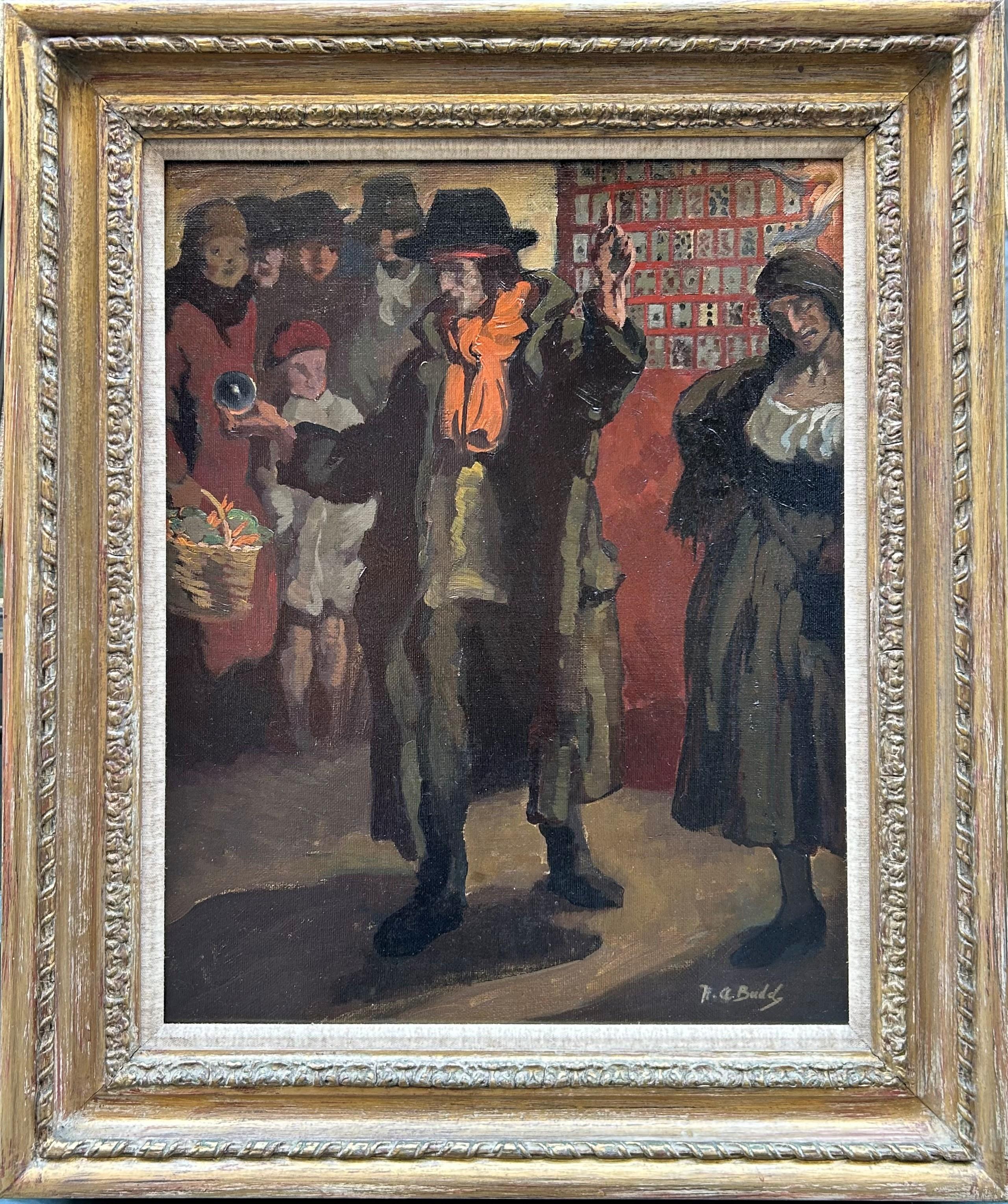
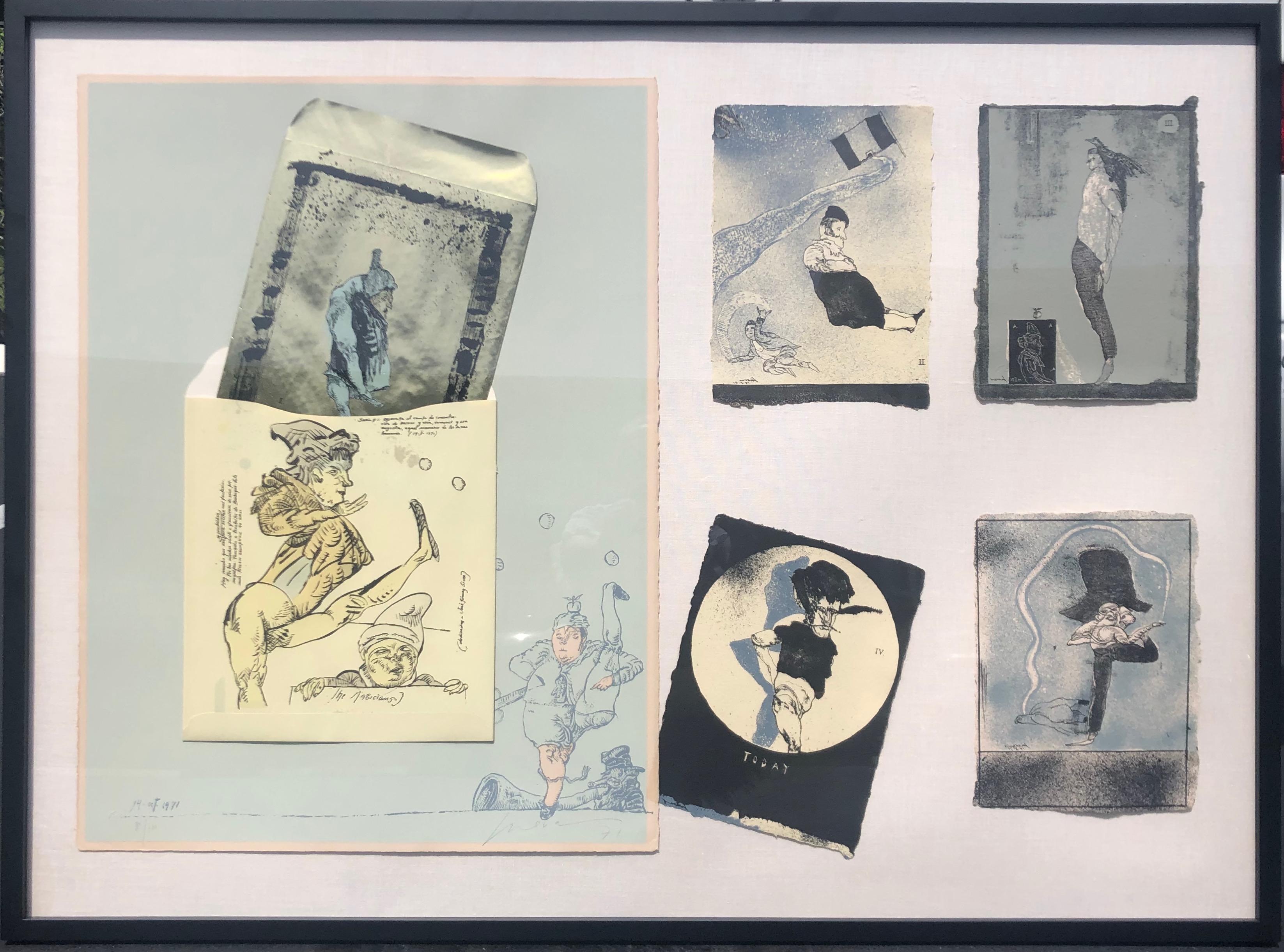
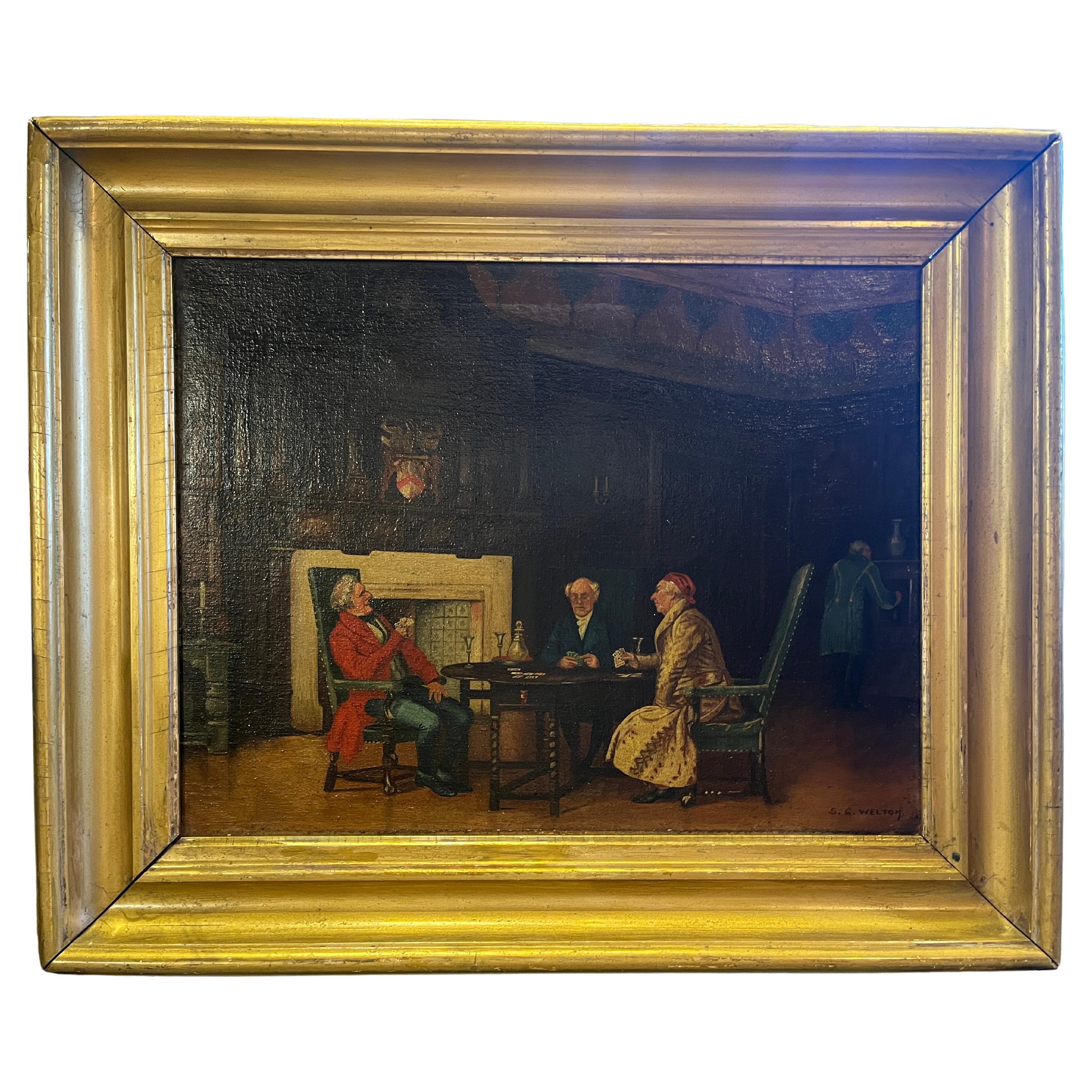
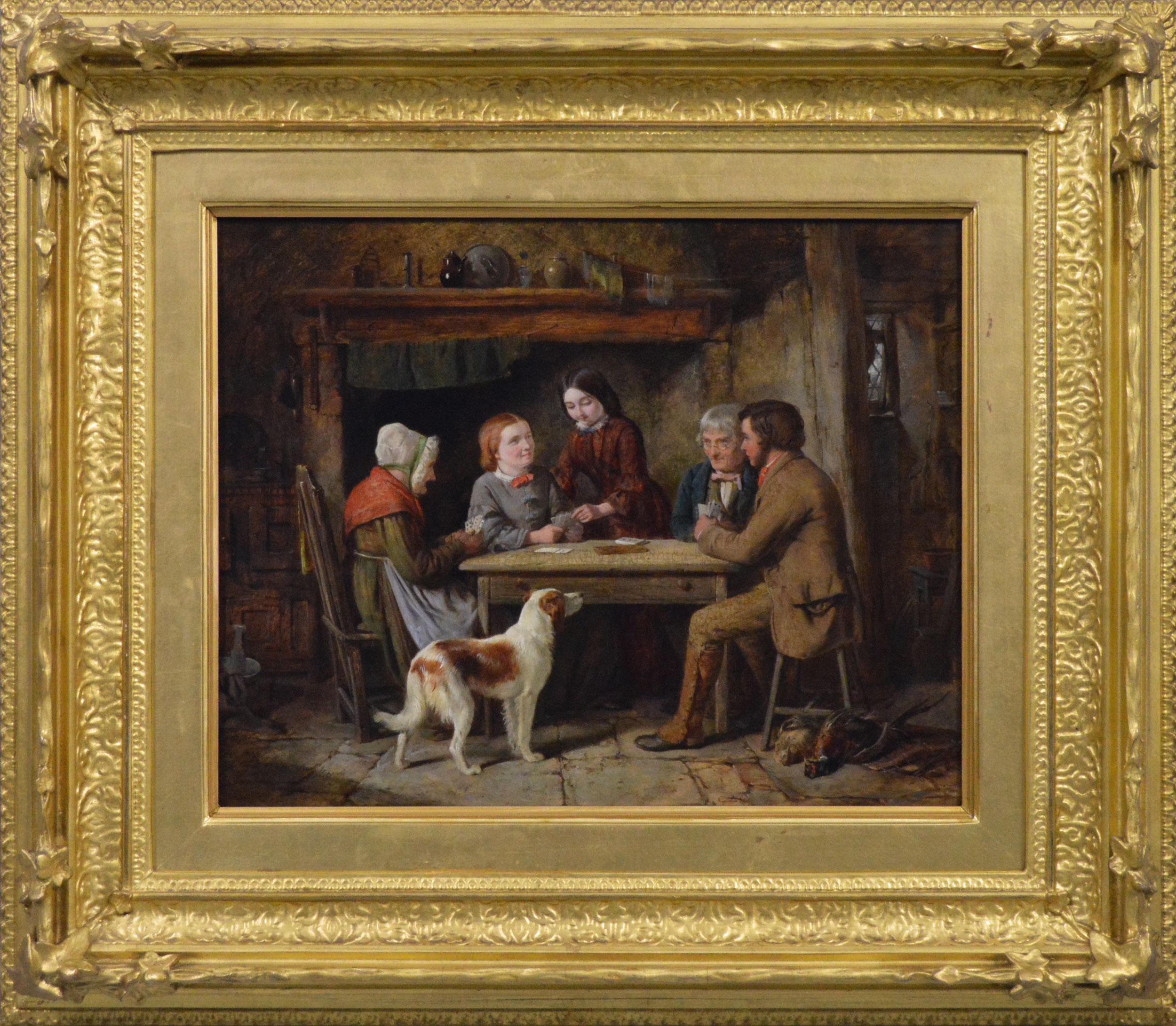
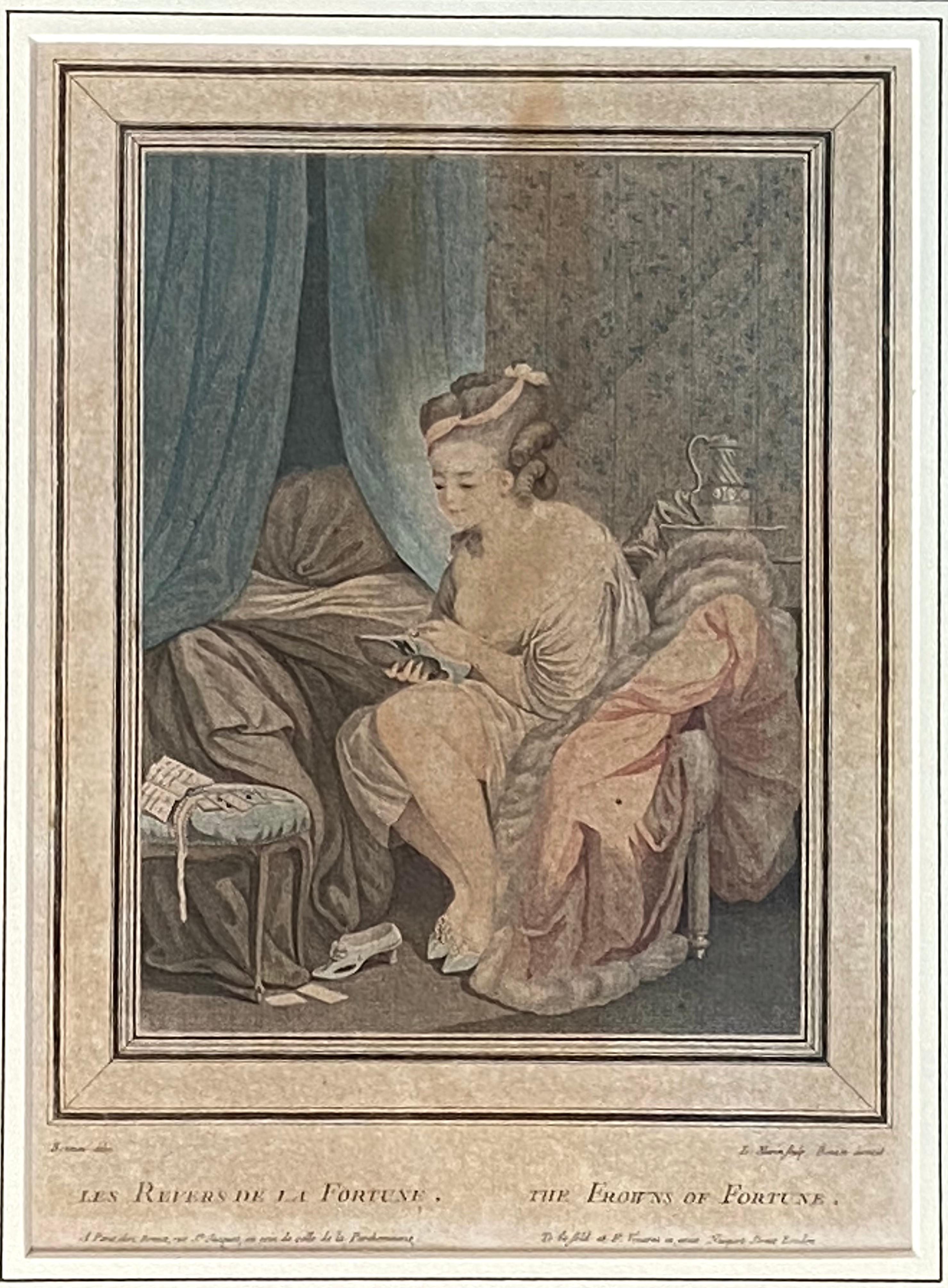
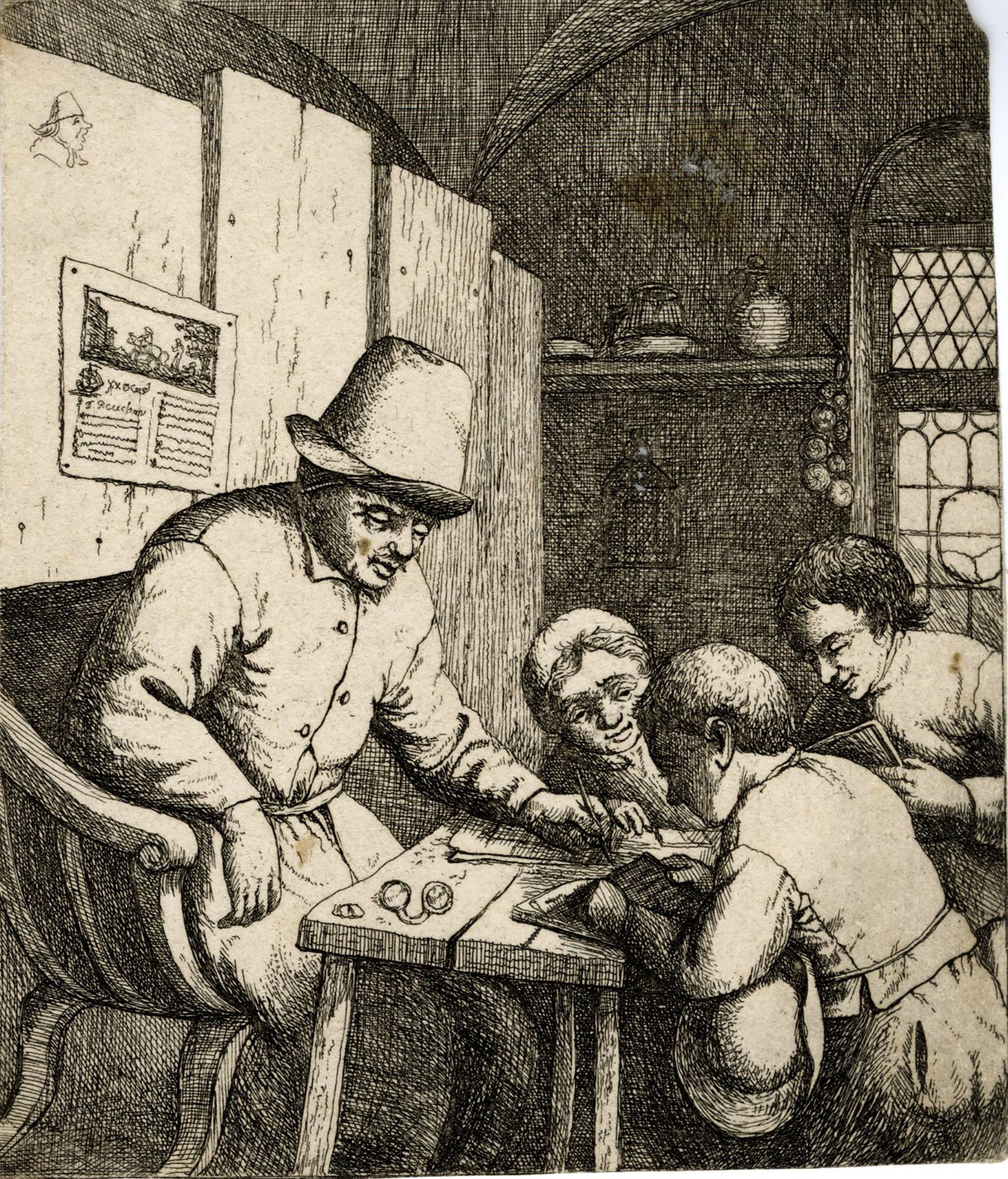
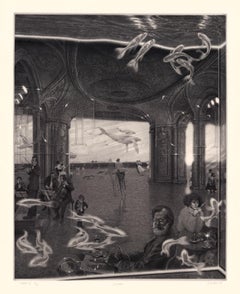
![Trompe l'oeil [Punch and Judy].](https://a.1stdibscdn.com/a_3312/1620315874402/Trompe_L_Oeil_Punch_87325_master.jpg?width=240)
![Trompe L'oeil [untitled]. Homage... Ter Nagedachtenis van S. G. Wezel oud 76 Jar](https://a.1stdibscdn.com/a_3312/a_80146321619885874600/Wezel_Tromphe_l_oeil_crop_82094_master.jpg?width=240)
